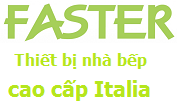“Block Layering: The Intersection of Crypto, Layer 2 Scaling, and Digital Asset Management in NFTs”
The world of cryptocurrencies has come a long way since its launch in 2009. However, as the market has continued to grow and mature, new challenges have emerged that require innovative solutions. One of these challenges is scaling the complexity of blockchain networks while maintaining high performance.
One area where this challenge is becoming increasingly apparent is the rise of Layer 2 Scaling (L2S) technologies. L2S refers to the process of offloading transaction fees from the main blockchain, increasing its scalability and reducing congestion. This is especially important for digital assets that have relatively low demand but high value.
Layer 2 Scaling: The Solution
Layer 2 scaling has gained traction in recent years as a way to reduce costs on traditional blockchains. By offloading transaction fees from the main blockchain, L2S technologies like Optimism, Polygon, and Solana enable faster and more reliable transactions. This not only improves the user experience but also lowers the overall cost of using cryptocurrencies.
However, L2S is not a miracle solution; it is only one piece of the puzzle. To achieve true scalability, developers must consider several factors, including:
- Tokenomics: The design and use of tokens in the blockchain can affect its scalability.
- Network capacity: The number of nodes in the network can affect the overall processing power.
- Data management: Efficient data storage and retrieval mechanisms are critical for high-performance transactions.
Digital asset management (DAM)
As cryptocurrencies gain more and more public attention, digital assets have become an important part of any investment portfolio. However, managing these assets has always been a challenge. DAM solutions aim to simplify this process by providing secure, decentralized storage and management platforms.
Level 2 scaling technologies, such as L2S, can be used in conjunction with DAM to offload active data from the main blockchain, reducing costs and increasing scalability. This enables:
- Increased storage capacity: Using L2S allows developers to store more assets on their platform without impacting performance.
- Improved transaction efficiency
: Faster transactions reduce network congestion and improve the user experience.
Non-fungible assets (NFT)
One of the most interesting applications of cryptocurrencies is the creation of non-fungible assets (NFTs). NFTs are unique digital assets that have inherent value and rarity. Because of this, they have become a highly sought-after commodity in numerous industries, including art, collectibles, and gaming.
Layer 2 Scaling and NFTs
L2S technologies can play a critical role in the growth of the NFT market. By reducing transaction fees and improving scalability, L2S solutions enable developers to create more complex digital assets without sacrificing performance.
NFT marketplaces such as OpenSea, Rarible and SuperRare have already benefited from L2S innovations. These platforms enable fast transactions, less congestion and increased storage capacity, allowing NFTs to be created and sold at scale.
Conclusion
The intersection between crypto, L2S and digital asset management is a critical area that offers promising prospects for the future of blockchain technology. As we continue to see growth in these areas, it is important to consider the impact on scalability and efficiency on both sides. By layering blocks, developers can create seamless user experiences while maintaining high performance.
In summary, Layer 2 scaling, digital asset management, and non-fungible assets are all essential components of a thriving blockchain ecosystem.





